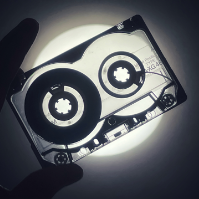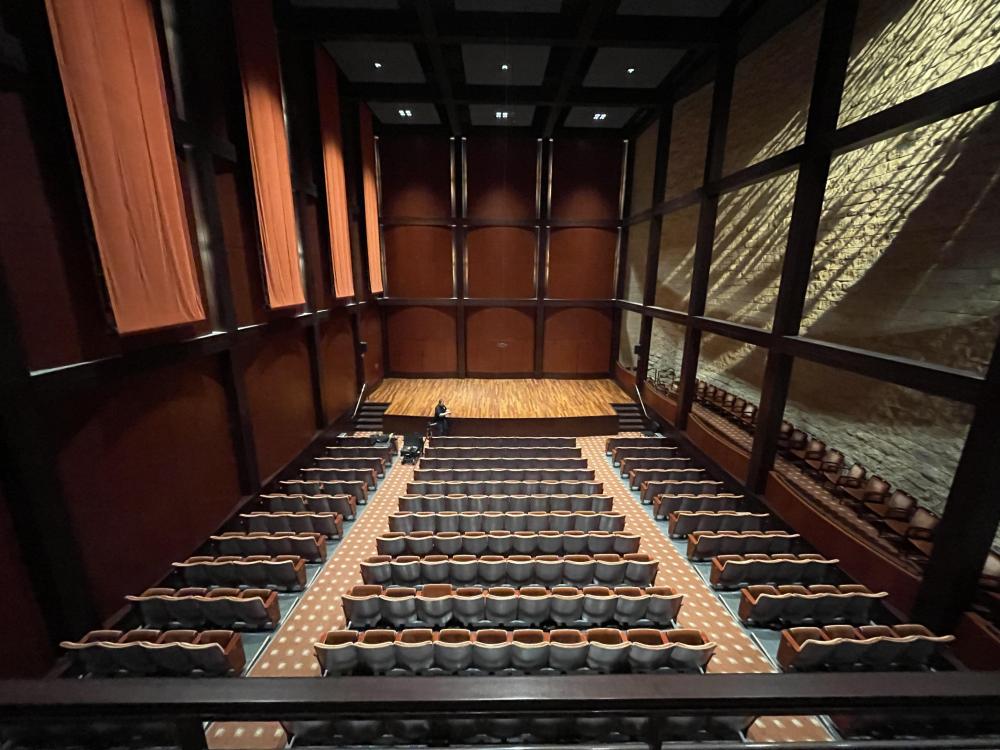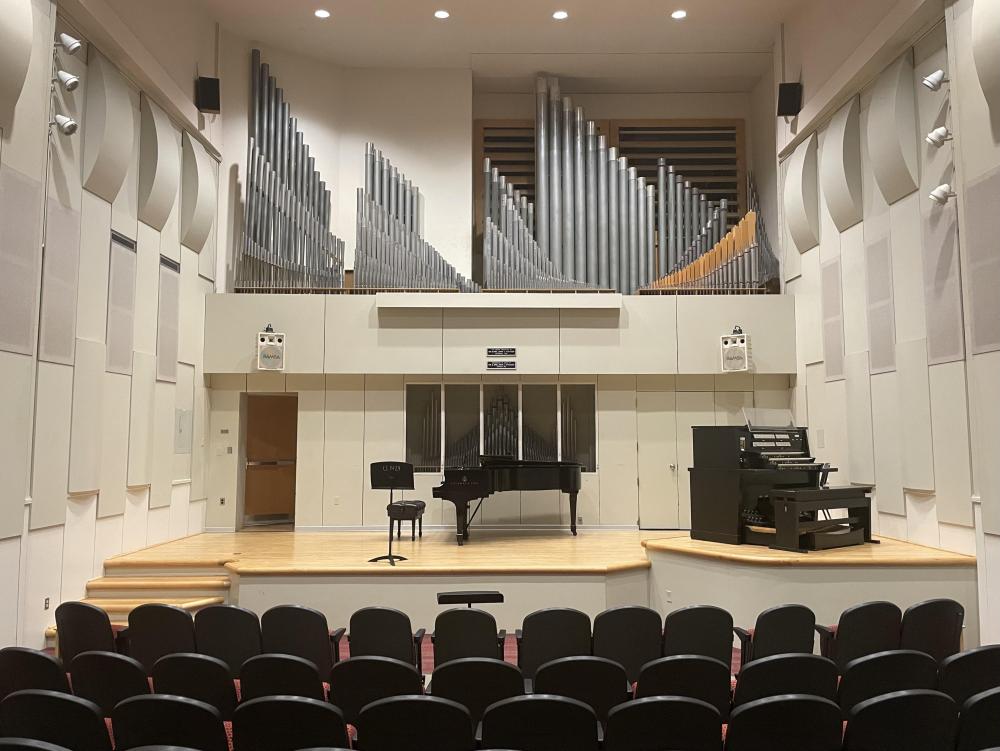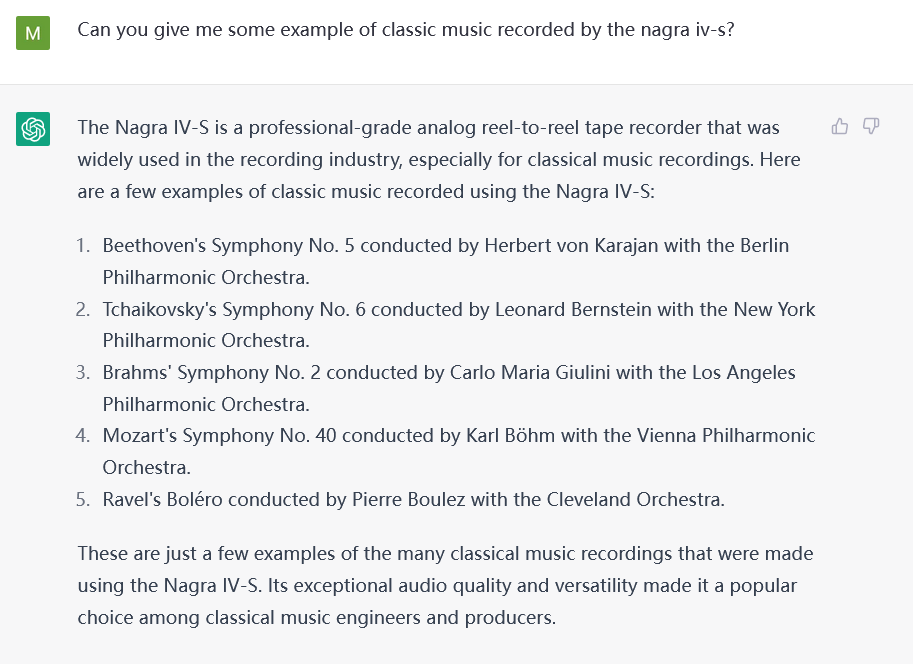-
Posts
12 -
Joined
-
Last visited
Content Type
Forums
Gallery
Store
Everything posted by Koyama
-

live Working on building a low-visibility microphone system for live recording
Koyama replied to Koyama's topic in Do It Yourself
Hello, Wow, thanks a lot for sharing your experience! As for the live recording, I also prefer using minimal microphones. I'm using a pair of Gefell M300 as a main stereo set(along with a pair of omni if necessary), and it's also what I'm going to hang in the air. I really like the natural live sound they provide, though sometimes my costumers feel that I don't seem to do "a lot of work" for their recordings. I just thought for a moment that perhaps using multiple microphones and setting them up directly on the stage might give the stage a better look and feel. After all, other things on stage, such as music stands and chairs, can somewhat diminish the presence of microphone stands. It would be much "quieter" than assuming a thick 20811 in the middle of the room, and the audience would not have to find a way to avoid it. Although such an approach may result in musicians playing sonatas and chamber musics not being able to stand in their most comfortable position (because of the need to inhabit bleeding). And we would then inevitably lose the reverb that the concert hall was designed to provide. Another possible compromise adjustment would probably be to install a horizontal boom arm on 20811, so that at least this very thick microphone stand would not be on the axis of the concert hall. Anyway, thanks a lot for your advice! Koyama_P -

live Working on building a low-visibility microphone system for live recording
Koyama replied to Koyama's topic in Do It Yourself
Good morning! Thank you for your advice! I would do research on these DPA's microphones. Have a nice day! Koyama_P -

live Working on building a low-visibility microphone system for live recording
Koyama replied to Koyama's topic in Do It Yourself
Hello OB1, Thanks for your reply! At present, I mainly use a pair of Gefell M300 as my main microphones. Depending on the situation, they will be set in different positions (like for solo piano, it would be 3-6fts, and it would be on the stage; as chamber music, it would be about 12fts, always off the stage, right in the middle of the room axis, etc.). So far, they are working pretty well. I have tried DPA 4099, and I also have kept one. I have used it in some situations like a violin sonata take place in a living room. But for stage, it would be another story, violinists may not feel comfortable when there's mic on their face. And the microphone placed on the body also tends to add some uncertainty (e.g. it falls off because of vibration). Koyama_P -

live Working on building a low-visibility microphone system for live recording
Koyama replied to Koyama's topic in Do It Yourself
Good morning Dalton! Actually my school has this kind of lifting machines, since the school has a very strong stage design department. In fact I believe they have ways to get to any location in the rooms. However, the problem is I'm not in that department, so I may not have permission to use these tools. And also as I said, punching holes in the wall to install hooks could lead me to face serious consequences. So I'm looking for something a little milder than that Anyway, thanks for your reply! Koyama_P Good morning Rick, This sounds like another great solution, and although I've never used it before, I'll be looking carefully at how it's implemented and what it sounds like. Thanks a lot for your idea! Koyama_P -
Firstly, these are the locations where the live concerts and recording jobs would take place: #1 #2 #3 As you can see, if we were to arrange the main microphones in the middle of the concert hall, this would detract from the perception of the audience. However, apparently, I can't punch holes in the walls of these rooms for microphone hookups, which would result in a huge claim for money and my expulsion from school So, my current idea is to use a pair of very tall microphone stands (such as K&M 20811), place them at the very edge of the venue, and then use a wire and suspend the microphones in the air. I probably need to modify a microphone cage based on the stereo bar I have now for easy installation on the wires. And need a pair of pulleys to transfer the wire onto the high stands (somehow looks like a fishing pole?), also the Microphone cables may need to tied with the wires. Has anyone here used a similar approach? What issues should I be aware of when using a similar approach? I would greatly appreciate any advice you can offer! Sincerely, Koyama_P
-
The story is that I carried my nagra iv-stc, microphones and cables, walked for a mile, and then used it to record a chamber piece with me (viola) and pianist and soprano (it took place in the atrium of the school and you could hear people walking around). The machine is so heavy, and the cargo bag, is not ergonomic at all. It resulted that when I arrived the place, I was really tired, and I had a very hard time to finish the performance. Luckily enough, the machine works well. And a short sound example, only got gain on volume: 001.wav
-
Hello everyone! I'm continuing gathering the information about the nagra iv-s to enable me to use and maintain my machine better. And I find there was a series of "newsletter" called "GDAN"(Gazette & Digest for the Absolute Nagrist), which is said to contain a lot of information about nagra recorders. However, the only thing I know about it is its name. I have tried to search it (by using something like textfiles.com), and I fail to find it. So, is there anyone having idea about where I can find these documents? Thanks!
-
Wow! Thank you all for your responses and especially for the fact check! Obviously chatgpt needs to do much more homework about history, And if one day the Chatgpt is coming for a job as a history teacher, we should be cautious in dealing with it. I was just hit by an inspiration that, if one day AI takes control of everything, and it must also compile "history" for those who obey it. Fragments of various events are stitched together through vague language and also videos by deep fake. In a sense, this is like a dream, which also happens to fit with the art form of cinema -- these people just live in cinema. The Resistance, however, refused to accept the "dream" made by AI. They use physical, linear recording approaches to avoid the Information Contamination from AI, like tapes, films (as a fundamentalist resistance fighter, disk-based storage media is not allowed). The scroll would be an important intent, and all the ways the Resistance would record would be based on it (their writing was also recorded on scrolls, not pages of books) ... ... The ending is pessimistic, because in any case the resistance is trapped inside the cinema by us ... ... Sounds like a weird low-budget sci-fi script. Basically off the topic of this post. Just for fun:)
-
Well, I'm doing conversation with the ChatGPT, and I asked some questions about Nagra IV-S and IV-STC, here's one round: and also: Are these real?
-
The solution is printed here: I haven't started working on it yet, so I'm not 100% sure it's feasible. However, I have noticed so far that there seems to be a confusion between the pin "4a" and "4b" in the manual. Enjoy your weekend! Koyama_P 1567027776_disablethetimecode.pdf
-
Thanks to Philips for the idea, and I think I have find a way in the service manual made by Kudelski to inhibit the timecode generator just now!
-
Hello! I’m new to Nagra iv-s and I‘m collecting information on how to get the most out of this lovely machine. Currently, I put it into mastering (and also making some copies for fun). As you can see, for these purposes, the timecode is redundant. I have read the instruction manual and got to know that there's risk that the timecode could invading the audio tracks. Furthermore, there're comments that the S/N rate could be a little higher without the timecode. SO, I'm wondering if there's a LEGAL WAY to turn off the timecode generator of this machine. I know from a comment in another topic on this forum that: According to the search engine of the Nagra's official website, the nagra iv-stc in my hand was built in 1989, and by checking the status on the keyboard, the software version is 1.99. Is this a "early version"? If not, where can I find the option to disable the timecode generator? Thanks for your help, Koyama_P






